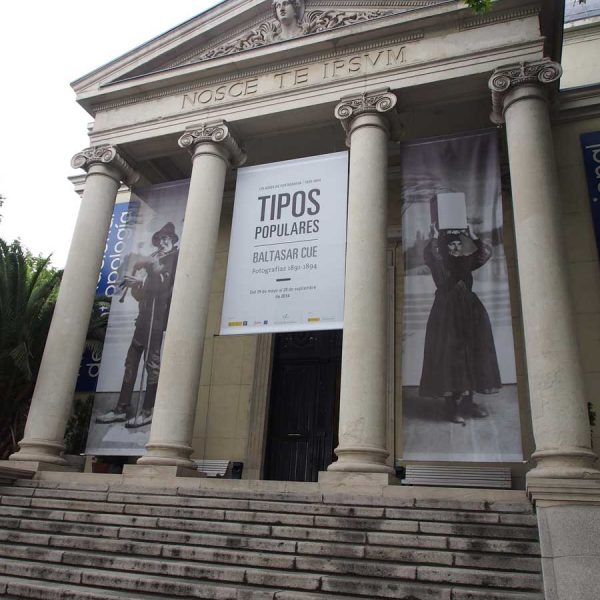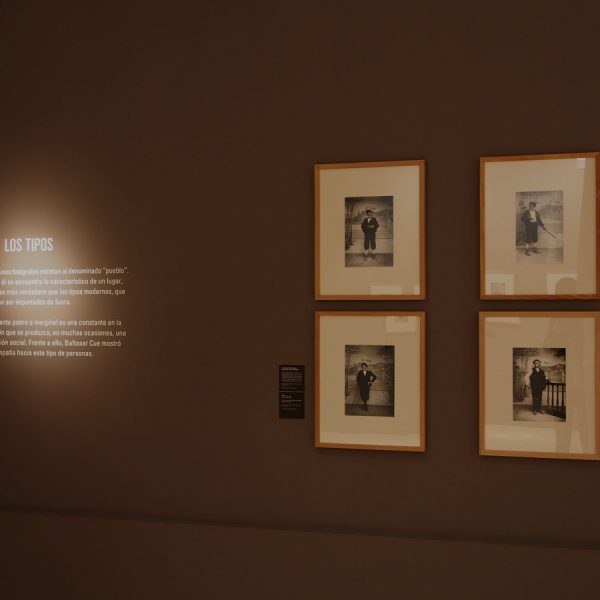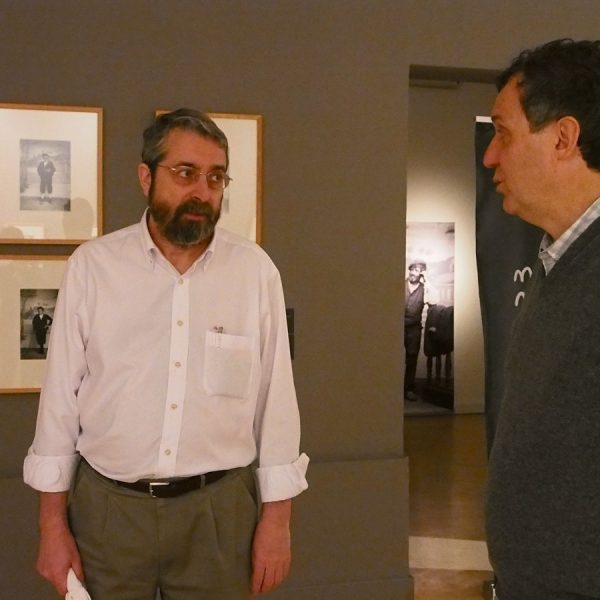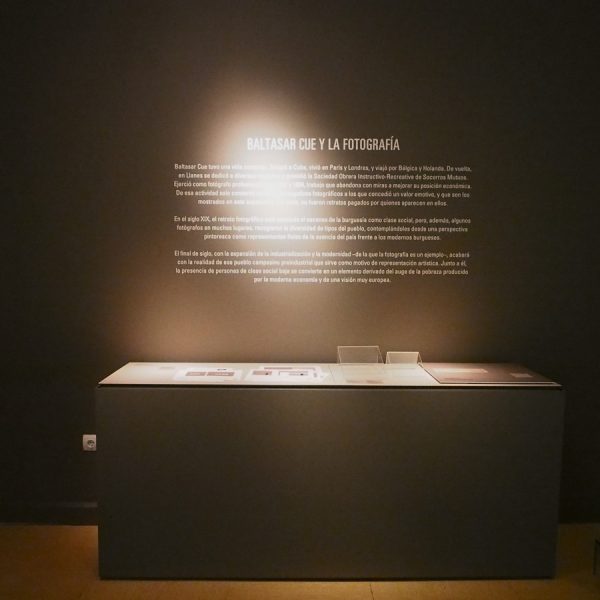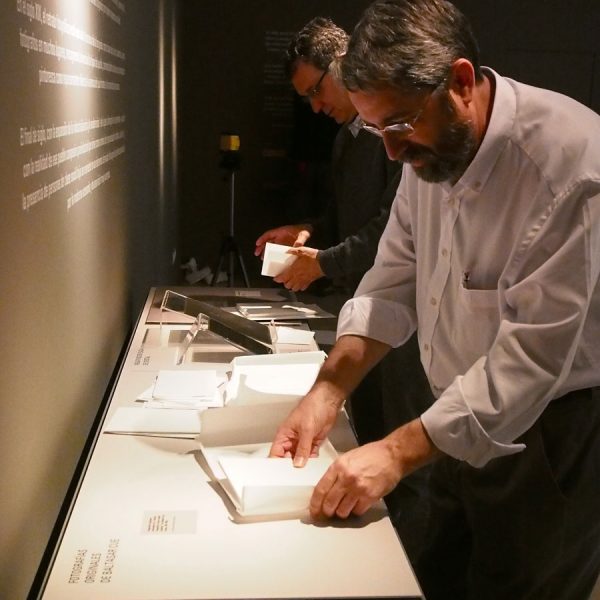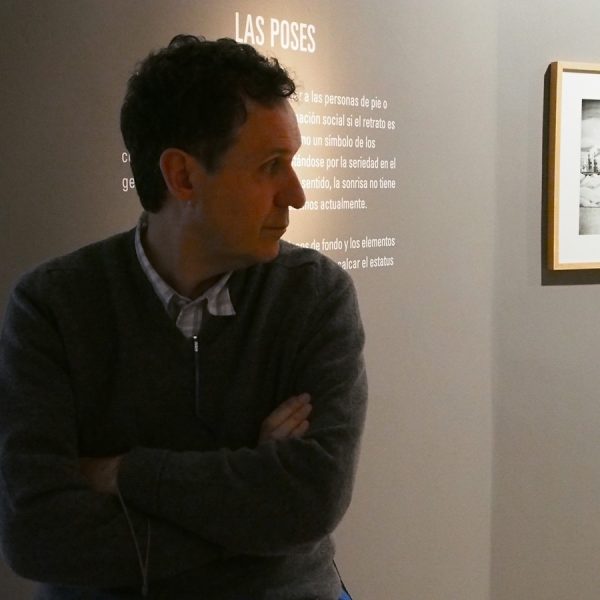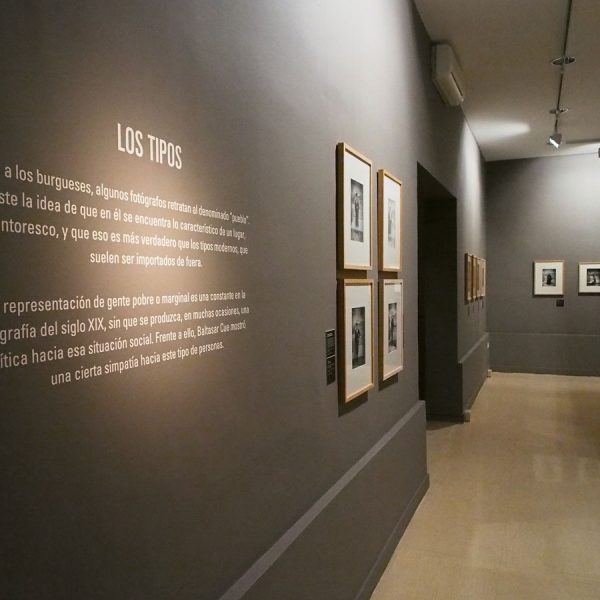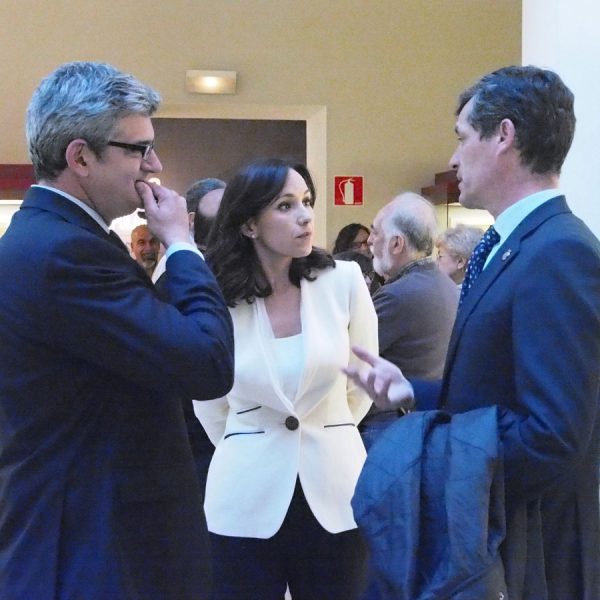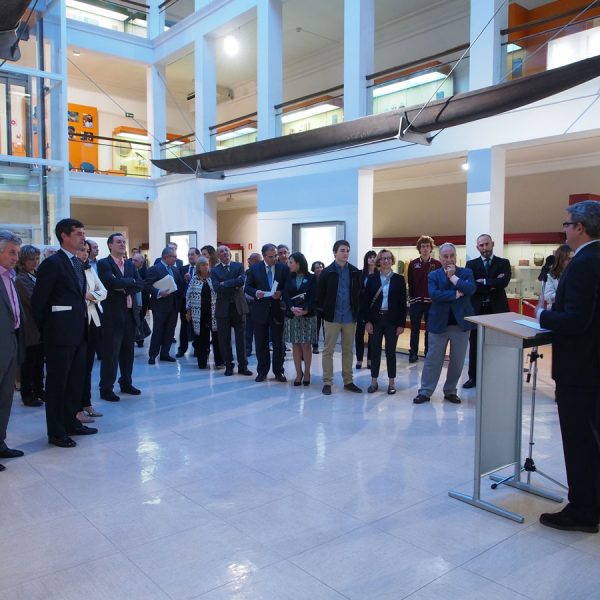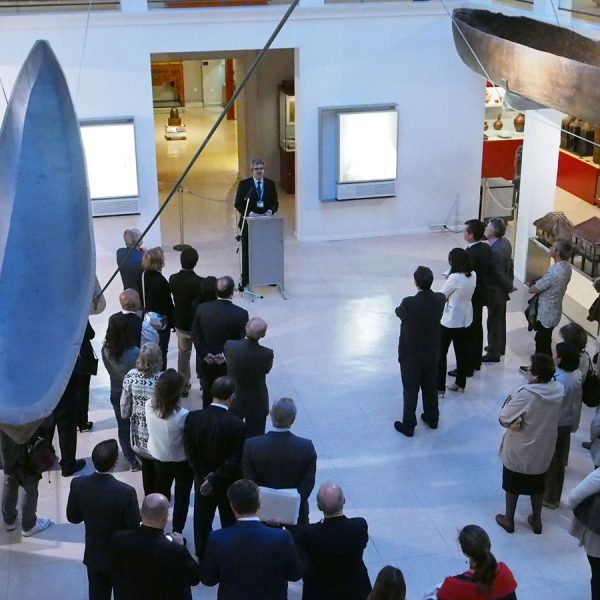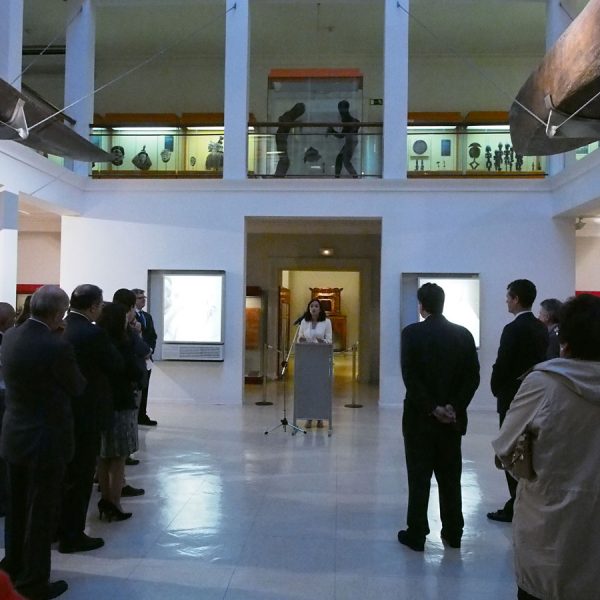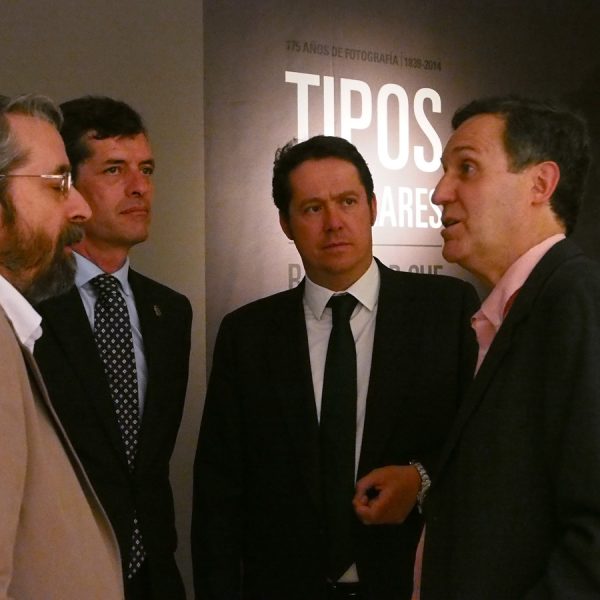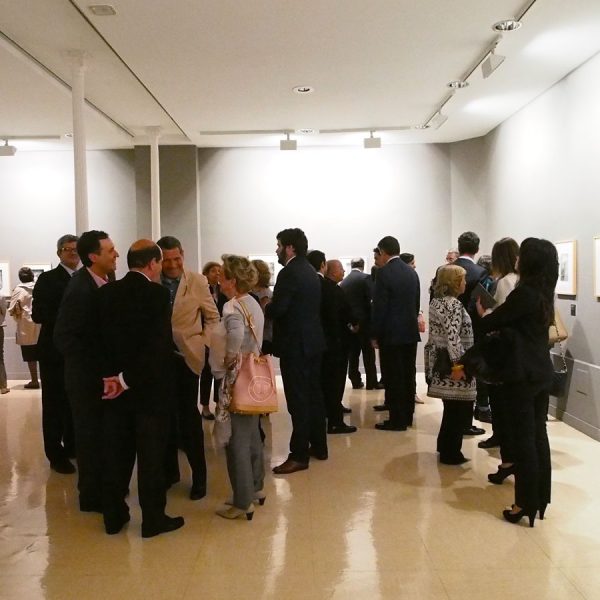175 YEARS OF PHOTOGRAPHY. POPULAR CHARACTERS. BALTASAR CUE
In 1839, 175 years ago, the invention of photography was presented in Paris. Since that date the outlook on photography has expanded considerably and all of the sciences, including anthropology, have used it as another working tool. Certain photographers, with the aim of documenting human diversity, started to focus their camera on different marginal or exotic social realities. Baltasar Cue (1856 – 1918) was one of them.
Cue, a cosmopolitan man, dared to go beyond the norm from a town in eastern Asturias, by introducing vagabonds, street musicians, poor people and strange and interesting characters in his studio. The quality of these portraits and the fact that he conserved all of the glass plate negatives, which were donated to the Museum of the Asturian People in 2008 by Carlos Suárez Cue, mean that this gallery of “popular characters” is an exceptional journey through 19th century Spanish photography.
Together, the Museum of the Asturian People, which has donated the collection, the National Museum of Anthropology, which hosts the exhibition and the María Cristina Masaveu Peterson Foundation, thanks to its continued sponsorship in the field of photography, with the collaboration of the Sub-directorate General for the Promotion of Fine Arts of the Ministry of Education, Culture and Sports, in honour of 175 years of history of photography, have organised the exhibition: Tipos populares (Popular characters). Baltasar Cue. Photographs (1891-1894)
BALTASAR CUE (Llanes, Asturias, 1856 – 1918)
Baltasar Cue was born in Llanes, Asturias, in 1856, where he also died in 1918. However, he did not spend his whole life in the town and, following in the footsteps of some of his brothers, he emigrated to Cuba. After, he lived in Paris and London, where he forged an interest in photography, and he travelled through Belgium and Holland. After returning to Asturias, he worked in different businesses in his hometown and he was the president of the Educational and Recreational Labour Mutual-Aid Society “El Porvenir”.
He engaged in amateur photography from 1888 and worked as a professional photographer between 1891 and 1894. He advertised as a specialist in “field work, snapshots, landscapes, enlargements, groups, reproductions and portraits from “mignon” to the grand salon”. In 1894 he stopped working as a photographer and sold his studio.
Years later he put together a series of photo albums entitled Tipos, fiestas y paisajes de Llanes (Characters, Fiestas and Landscapes of Llanes). Today, only one, dedicated to human characters, remains. In 2008 his grandson Carlos Suárez Cue donated the glass plate negatives of these photographic portraits to the Museum of the Asturian People.
“POPULAR CHARACTERS” Baltasar Cue. PHOTOGRAPHS (1891-1894)
Photography and portraits. In the 19th Century, photographic portraits were associated to the rise of the bourgeoisie as a social class. However, certain photographers in many places reflected the diversity of popular characters, contemplating them from a picturesque perspective as faithful representatives of the country’s essence compared to the modern bourgeois.
Due to the expansion of industrialisation and modernity, of which photography is an example, the end of the century put an end to the reality of the pre-industrial rural people who served as a source of artistic representation. Furthermore, as a result of the rise in poverty due to the modern economy and a very European vision, there was an increased presence of people of low social classes.
The poses. In bourgeois portraits, and also in the photographs appearing in this exhibition, poses are a fundamental aspect, as they reflect social status in a symbolic manner. The bourgeois are usually depicted in a standing or sitting position, or transmitting a hierarchical social order in the case of group portraits. The attitude of the people depicted in the portraits, as a symbol of their genuine behaviour, was characterised by serious gestures and poses, in representation of order. Smiling, for example, did not form part of this representation, unlike the role that it plays in the modern day. The decoration of backdrops and other added elements were used to complement the poses and emphasise the status or profession of those photographed by means of elements alluding to them.
The characters. Alongside the bourgeois portraits, there are also people of other social classes. Popular characters were contemplated from a “picturesque” and artistic perspective, as faithful representatives of the essence of a country or region, compared to the upper classes, who were always seen as the reflection of modernity originating from abroad. At the time, the picturesque was considered to be more truthful than modern characters.
These artistic representations of rural, pre-industrial people were usually the work of amateur photographers or professionals engaging in non-commissioned work. As a sub-genre of such work, we can find portraits of people of a very low, or even marginal, social standing. This was associated with the rise in poverty, as a result of the modern industrial economy.
This representation of poor, or marginal, people is common in 19th century photography and, in most cases, there was no criticism towards such social standing. In this case, Baltasar Cue showed great kindness towards them, not only in the manner that he photographed or selected them, but also for the fact that he displayed some of his photographs on the walls of his own home.
NATIONAL MUSEUM OF ANTROPOLOGY
From 29 May to 28 September 2014
Opening: Wednesday 28 May. 19:00
C/Alfonso XII, 68. Madrid
Number of Visitors: 18,500
Organised by: The National Museum of Anthropology, the Museum of the Asturian People and the María Cristina Masaveu Peterson Foundation
In collaboration with: The Sub-Directorate General for the Promotion of Fine Arts. Ministry of Education, Culture and Sports.

